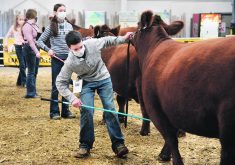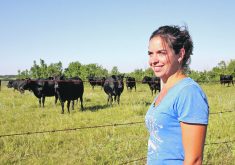The 1990s were a time of study and crisis for the Canadian Prairies. The aftermath of the previous decade’s recession, low commodity prices, drought and skyrocketing interest rates had ruined many farmers and those still hanging on were coping with stress and uncertainty.
The new millennia brought many questions about how computerized world systems would adapt to 2000, or Y2K, as it was commonly called.
Most computer programs at the time used only the last two digits of the year and were designed for the 1900s. Each year, the date flipped automatically to retain files. At 2000, unless a change was made, it was feared computers would revert to the year 1900 and many programs would crash.
Read Also

Alberta cracks down on trucking industry
Alberta transportation industry receives numerous sanctions and suspensions after crackdown investigation resulting from numerous bridge strikes and concerned calls and letters from concerned citizens
Fortunately, the year 2000 came with few problems.
In the late 1990s, The Western Producer launched a Census of Agriculture by mailing surveys to 69,000 farm operators.
Of those who responded, 60 per cent earned less than 20 per cent of their income off the farm and 13 per cent earned more than 60 per cent of their total income off the farm. In 1997, about 15,900 readers had at least one satellite dish and about 28,000 had at least one computer.
Computers began playing a significant role at the newspaper and on rural farms. At The Western Producer, a leading-edge desktop computer system was adopted in the early 1990s, allowing editors to design pages on screen. It later evolved into a system capable of sophisticated design and processing.
In August 1995, The Western Producer opened a World Wide Web site, featuring Canada’s largest farm classifieds.
On the farm, computers were being used to monitor livestock production, for bookkeeping and creating webpages for marketing farm products. Frequently, it was the farm wife trained in how to use the system.
Cell phones improved on-farm communication if service was available, and GPS systems introduced the concept of precision farming. Yield monitors on combines produced precise data on crop production for each field. This information was then entered in a computer for analysis.
Rural depopulation was a great concern because many of those leaving the countryside were also leaving the province and most were young people. Statistics showed that in 1989, Saskatchewan’s population fell below the one million mark, a target reached only six years earlier.
In a Jan. 15, 1998, letter to the editor, J.R. Clayton of Killarney, Man., stated that building inland grain terminals was a leading cause for depopulation in rural communities. He opined that because the terminals had to gain control of all grain within a 50-mile area, other elevators would close, resulting in job losses and departure of families.
With depopulation and budget cuts, many rural schools were closed across the Prairies. Because schools in rural communities were often the hub of activity and community spirit, closures were seen as a catalyst to future losses in services.
Hospital closures in rural communities were occurring at this same time.
Statistics Canada estimated Saskatchewan farmers had a 28 per cent decline in income over the past decade. In 1992, the average annual farm income was $9,764.
A panel on the future of farming discussed how the younger generation could acquire land when it was priced at $80,000 a quarter. The conclusion was that younger farmers needed larger farms or risky diversification schemes to make the farm worthwhile.
Noreen Johns, who farmed 2,000 acres with her husband, John, at Zelma, Sask., stated, “young farming families must either forgo their 8-to-5 well-paying city jobs, or work both on the farm and in the city.” Red Williams, an animal science professor, said farmers should consider investing in agriculture through inland terminals, short-line railways and intensive livestock barns.
For Larry and Murielle Bugera, who farmed near St. Pierre, Man., cultivating a vibrant rural community meant turning their four kids on to farming. Murielle said she and Larry “work hard to speak optimistically about farming to counter all the negatives their children hear from others.”
In October 1993, the B.C. Women’s Institute had three major concerns in the 1993 federal election: the increase in violent crime; health care accessibility; and a national child-care program that was accessible for farm families.
The institute and other farm organizations were also concerned about the impact of the North American Free Trade Agreement signed between Canada, the U.S. and Mexico in 1994. They questioned whether it would have an impact on farm income, employment and the farm family.
The largest survey ever done on violence against women was conducted by Statistics Canada in 1993. In 12,300 telephone interviews with women, the survey asked specific questions about behaviours considered offences under the Criminal Code of Canada that could be acted upon by police.
“The violence was so widespread that 29 percent of married or formerly married women (including common-law) were assaulted by their husbands. One Canadian woman in 10, or one million women, had experienced violence in the last 12 months. The rate of wife assault for women currently living with men who drank regularly (at least four times per week) was triple the rate for those whose partners didn’t drink at all,” the survey said.
It put numbers to longstanding claims by women “that violence against them was prevalent, extreme, and a crisis.”
Only 14 percent of violent incidents reported to researchers were ever reported to police and only six percent of sexual assaults were reported to police, according to survey results.
The Western Producer saw need for an upbeat celebration of the newspaper’s 75th anniversary. Staff chose to laugh at themselves by sharing some of the more amusing “bloopers” that readers had gleefully brought to their attention.
One memorable goof was a potato soup recipe from Liz Delahey’s column in the Jan. 7, 1983, issue. The first half of the ingredients were for a traditional potato soup, but the balance were for another recipe and included cloves, allspice, brown and white sugar, apple juice, vinegar, lemon juice and a half cup of brandy. Some of The Western Producer staff tried the recipe and discovered even extra brandy could not improve the taste of the soup.
Barb Glen, news editor and writer of the front page article announcing the anniversary celebrations, concluded saying, “we plan to have some fun with our anniversary celebrations and give our readers the opportunity to enjoy it along with us.”
Betty Ann Deobald is a home economist from Rosetown, Sask., and a member of Team Resources. Contact: team@producer.com.


















